Yanmenguan Travel Guide: Experience China’s Lesser-Known Great Wall

An Essential Guide to Visiting Yanmenguan
In This Guide
- An Essential Guide to Visiting Yanmenguan
- The Rich History and Legends of Yanmenguan
- Main Highlights: What You Absolutely Can’t Miss
- Planning Your Visit: A Practical Guide
- Tickets: Prices, Booking, and Tips
- How to Get There: A Complete Transportation Guide
- Local Cuisine and Accommodation Nearby
- Frequently Asked Questions
- Final Thoughts on Your Trip
Nestled amidst the rugged peaks of Shanxi Province, Yanmenguan Pass (雁门关) stands as a testament to China’s rich historical tapestry and strategic military ingenuity. Revered as one of the most significant fortifications along the Great Wall of China, this ancient pass has witnessed over 130 major battles over the span of two millennia. Once a critical gateway for invaders, particularly the Mongolians, Yanmenguan is more than just a historical site; it is a vivid portal into the past, where the echoes of warriors and the whispers of ancient strategies linger in the mountain air.
As you approach Yanmenguan, prepare to be captivated by its dramatic landscape. Accessible only by a timeworn road winding through towering cliffs, the pass is surrounded by breathtaking mountain scenery that enhances its imposing presence. The fortress itself, originally constructed in the Ming Dynasty in the 14th century, showcases impressive brick-and-stone walls that rise six meters high and encircle a kilometer-long perimeter. Each brick tells a story of resilience and defense, offering visitors a glimpse into the lives of those who once guarded the northern frontiers of China.
What to Expect When Visiting:

Yanmenguan.
- Historical Significance: Explore the depth of its history, with roots stretching back to the early Ming dynasty, and gain insight into the military strategies that shaped ancient China’s borders.
- Stunning Scenery: Marvel at the breathtaking natural beauty surrounding the pass, perfect for photography and leisurely hikes along the ancient paths.
- Cultural Insights: Engage with local guides who can provide fascinating anecdotes and historical context, enriching your understanding of this strategic site.
Whether you are a history buff eager to walk in the footsteps of ancient warriors or a traveler in search of majestic landscapes, Yanmenguan Pass promises an enriching experience that connects you to China’s storied past. Prepare to be transported back in time as you stand beneath the towering walls of this legendary fortress, a true gem in the heart of Shanxi.
The Rich History and Legends of Yanmenguan
A Journey Through Time: The Historic Significance of Yanmenguan
Nestled in the rugged landscapes of Shanxi Province, Yanmenguan Pass (雁门关) stands as a sentinel of ancient Chinese history, echoing tales of valiant warriors, strategic battles, and cultural exchanges that have shaped the nation. As one of the most crucial fortifications along the Great Wall of China, this pass has witnessed over 130 major conflicts over the span of two millennia, safeguarding the northern borders of the empire against invasions, particularly from Mongolian forces.
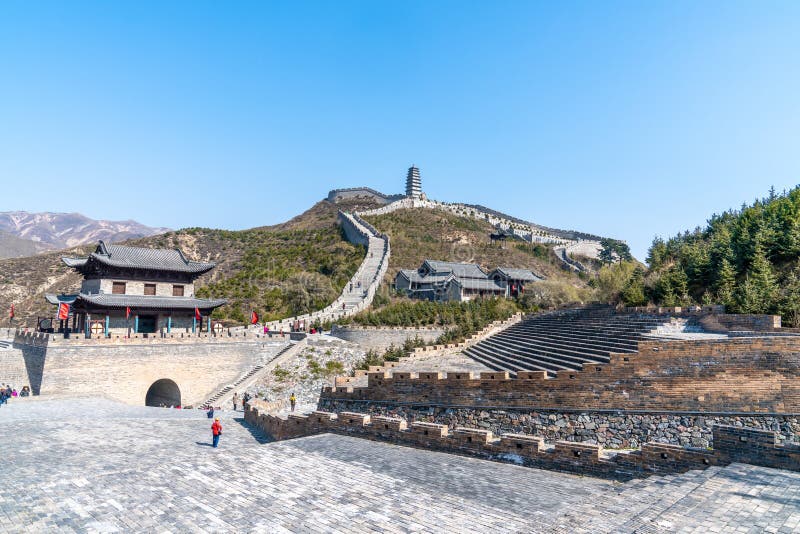
Yanmenguan.
Historical Significance
Yanmenguan’s roots trace back to the early Ming Dynasty, around the year 1374, when it was rebuilt and relocated to its current site. However, its history stretches even further back, with the earliest walls erected as early as 343 B.C. The pass earned its name, which translates to “Wild Goose Pass,” likely due to the migratory patterns of wild geese in the region. This geographic feature was not merely a natural formation but a decisive military stronghold that controlled one of the key routes into China.
Strategically positioned amidst towering mountain peaks, Yanmenguan Pass is accessible only via a narrow, ancient road winding through the cliffs. This natural bottleneck made it the logical choice for defending against foreign incursions and a vital point for trade and cultural exchanges between China and the peoples of the steppes.
Battles and Legends
Throughout its storied past, Yanmenguan has been the battleground for legendary heroes and fierce warriors. The pass is often associated with tales from the heroic age of the Han Dynasty, where brave soldiers defended the empire’s integrity against foreign invaders. The legends surrounding these battles are rich and varied, often highlighting the valor and strategic genius of Chinese generals who devised intricate defenses that turned the tides of war.
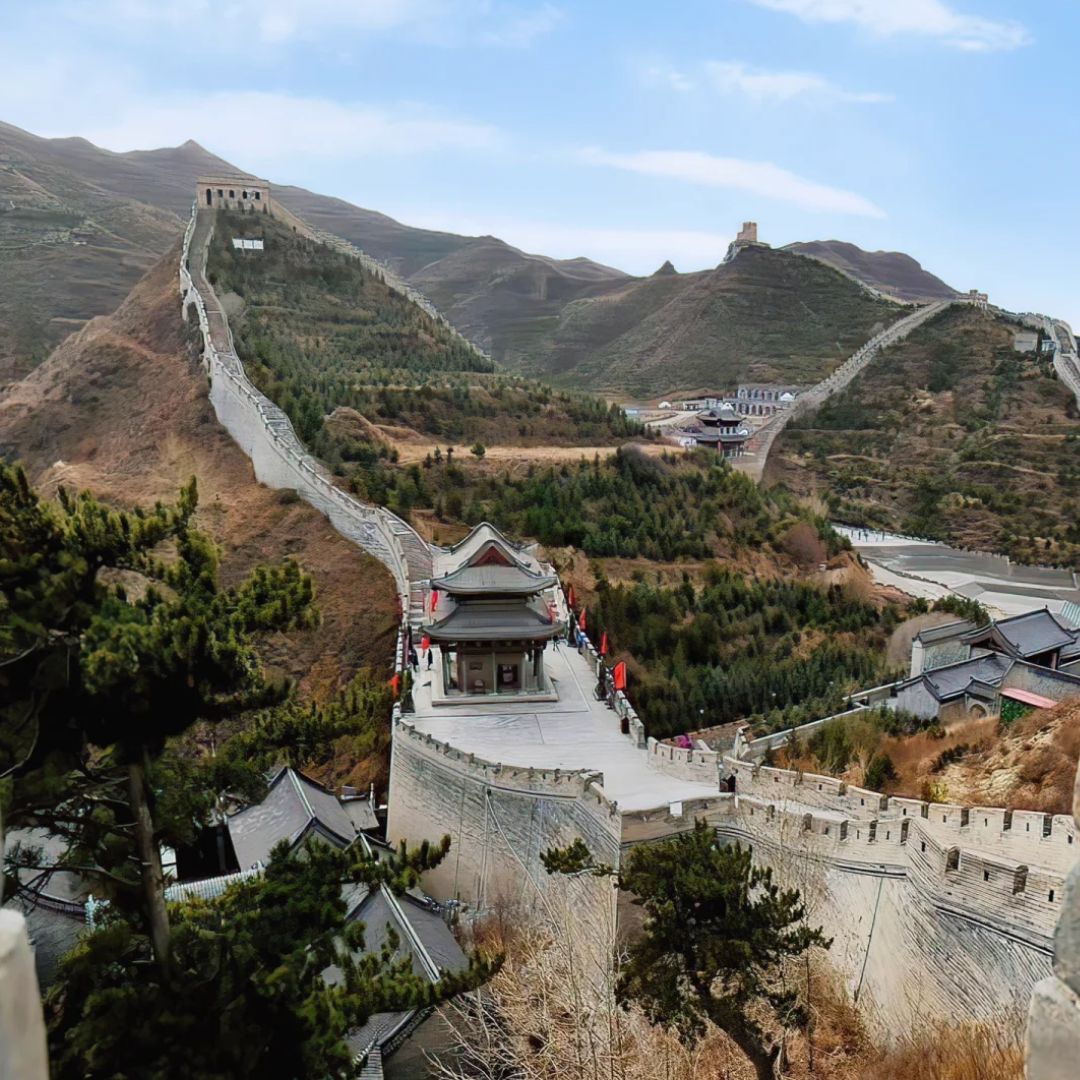
Yanmenguan.
One of the most remarkable stories is that of General Li Mu, a prominent military leader during the Warring States period. His tenacity and clever tactics at Yanmenguan became legendary, inspiring countless retellings in Chinese folklore. These tales serve not only to commemorate the bravery of those who fought but also to illustrate the cultural values of loyalty, honor, and sacrifice that are deeply embedded in Chinese society.
Architectural Marvel
The architectural design of Yanmenguan Pass is equally compelling. The fortifications encompass a sprawling area with walls made of brick and stone, rising approximately six meters high and stretching around one kilometer in circumference. This impressive structure not only served defensive purposes but also acted as a symbol of strength and resilience for the people of ancient China.

Yanmenguan.
Visitors to Yanmenguan today can explore these ancient walls, gaining insight into the military strategies that once protected the empire. The surrounding mountainous terrain adds to the dramatic backdrop, allowing travelers to appreciate the tactical advantages that the location offered to defenders.
Modern Recognition
In recognition of its significant historical and cultural value, Yanmenguan Pass was designated as a Key National Cultural Site by the Chinese government in 2001. This designation emphasizes the importance of preserving such sites for future generations, allowing travelers and historians alike to connect with the profound legacy of this ancient fortress.

Yanmenguan.
Conclusion
Yanmenguan Pass is more than just a historical site; it is a testament to the rich tapestry of China’s past. The stories of battles fought, heroes celebrated, and the architectural ingenuity of ancient fortifications come together to create a captivating narrative that continues to intrigue travelers and historians alike. As you explore this incredible location, you will not only walk through history but also feel the echoes of the legends that have shaped the essence of China.
Main Highlights: What You Absolutely Can’t Miss
Discovering Yanmenguan Pass: A Journey Through History
When you set foot in Yanmenguan Pass, you are walking through one of the most significant military sites in Chinese history. Nestled in the picturesque mountains of Shanxi Province, this ancient pass is not just a marvel of architecture but a testament to centuries of battles, strategic planning, and cultural exchange. Here’s what you absolutely cannot miss during your visit.
1. The Great Wall at Yanmenguan
Yanmenguan Pass is part of the Great Wall of China, specifically noted for its strategic importance. This section features well-preserved fortifications dating back to the Ming Dynasty, showcasing the ingenuity of ancient Chinese military architecture. As you stroll along its ancient stones, imagine the 130 major battles that took place here over 2,000 years.
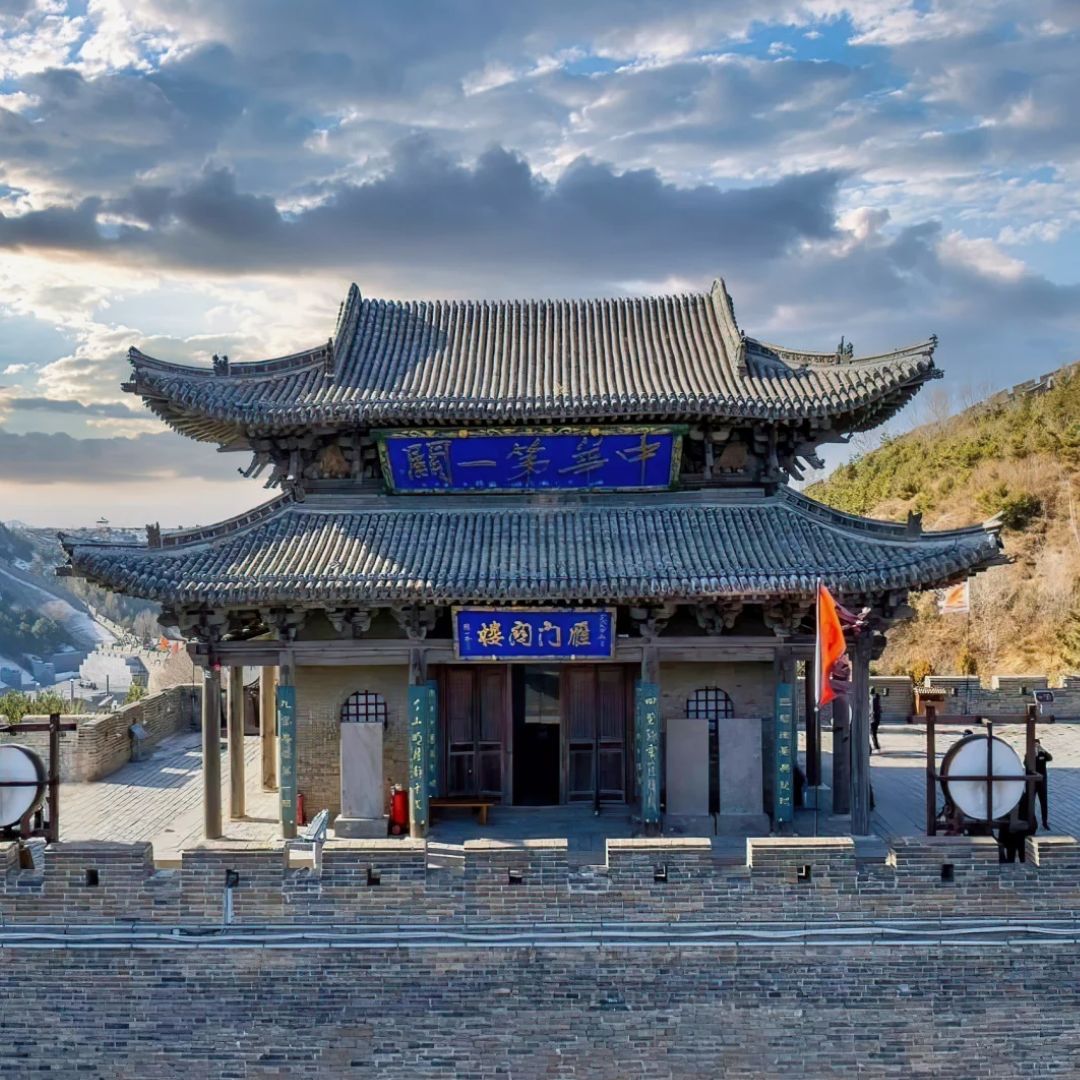
Yanmenguan.
2. The Fortress Structure
The fortress itself is an impressive sight. With a circumference of about one kilometer, the walls rise majestically to 6 meters, constructed primarily from brick and stone. The three gates of the pass served as critical points of control against foreign invasions, particularly from Mongolian forces. Take a moment to explore the various levels of the fortress and enjoy panoramic views of the surrounding mountains.
3. Scenic Mountain Roads
Getting to Yanmenguan Pass is an adventure in itself. The ancient road leading to it winds through dramatic cliffs and lush landscapes, creating a breathtaking backdrop for your journey. The route is not just a path to a destination, but a scenic experience that brings you closer to the natural beauty of Shanxi.
4. Cultural Significance
Yanmenguan is more than a military fortress; it is a symbol of the resilience and strategic brilliance of the ancient Chinese. Recognized as a Key National Cultural Site in 2001, it offers insights into the historical context of the region. Take time to appreciate the stories told through the architecture and the surroundings.
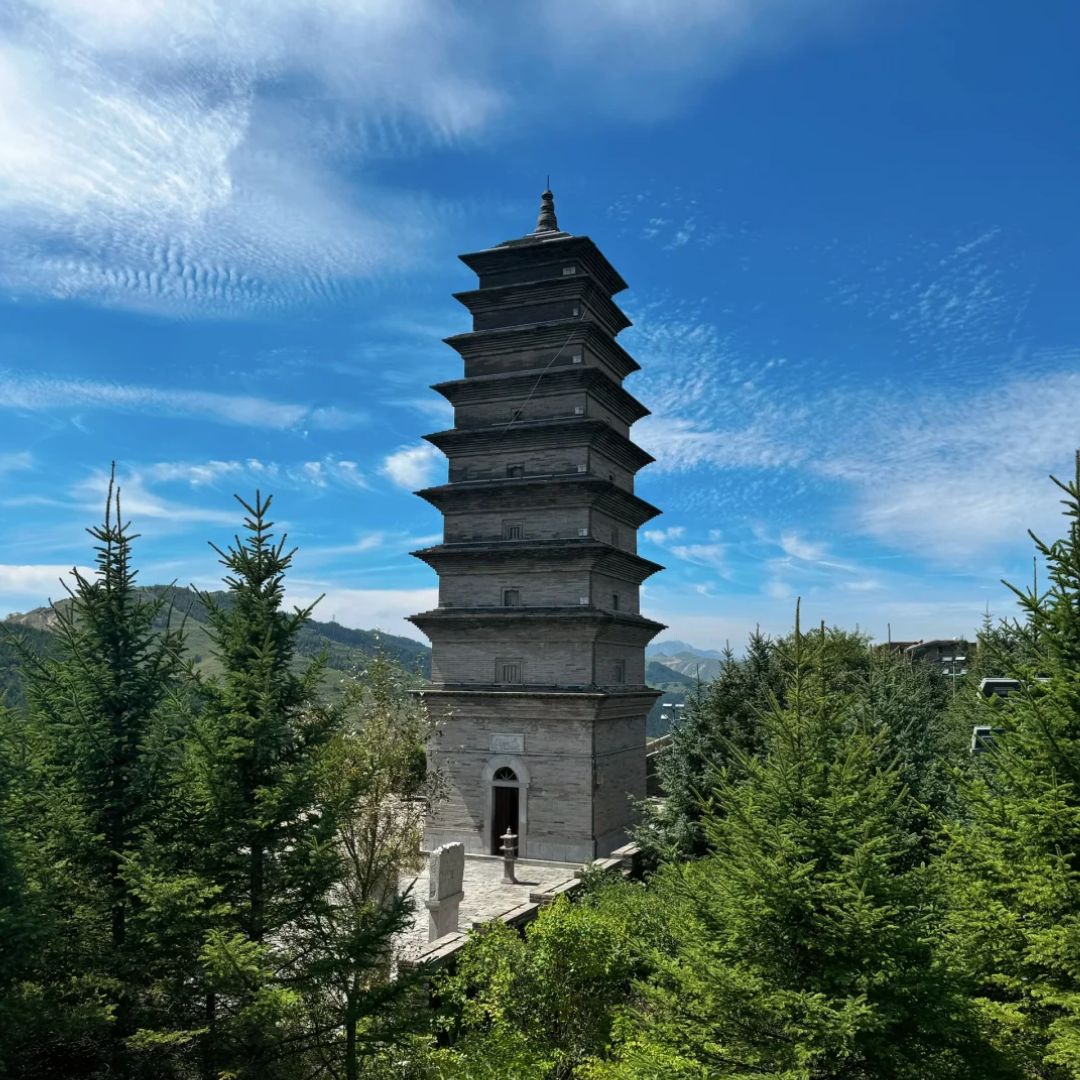
Yanmenguan.
5. The Wild Goose Legend
The name “Yanmenguan” translates to “Wild Goose Pass,” inspired by the migratory patterns of wild geese in the area. This connection to nature adds a layer of charm to the site and serves as a reminder of the harmony between humanity and the environment in ancient Chinese culture.
6. Nearby Attractions
While in the area, don’t miss other historical sites like the Great Wall-Yanmenguan Section, Yanmen Pass, and the Xinzhou Bianjing Building. Each of these locations offers unique insights into the region’s rich history and architectural magnificence.
7. Visitor Experience
Yanmenguan Pass is open daily from 8:00 AM to 7:30 PM, making it accessible for a leisurely visit. To enhance your experience, consider joining a guided tour that can provide deeper insights into the historical context and significance of the site.
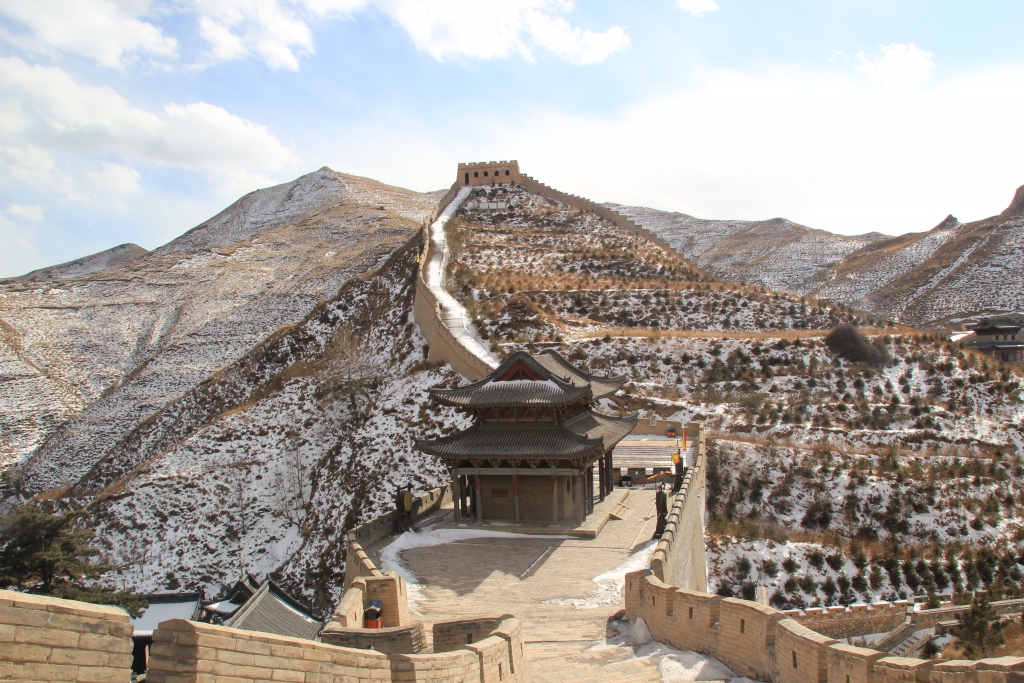
Yanmenguan.
Conclusion
Yanmenguan Pass is a must-visit for anyone interested in Chinese history and culture. Its dramatic landscapes, rich historical narratives, and architectural wonders offer a captivating glimpse into the past. Whether you are a history buff, an adventure seeker, or simply in search of stunning views, Yanmenguan promises an unforgettable experience that encapsulates the spirit of ancient China.
Planning Your Visit: A Practical Guide
Getting Ready for Your Visit to Yanmenguan Pass
Yanmenguan Pass, a remarkable testament to China’s historical fortifications, awaits your exploration in the mountainous terrain of Shanxi Province. Known for its strategic significance and breathtaking landscapes, this site offers a unique glimpse into the country’s past. Here’s everything you need to know to make the most of your visit.
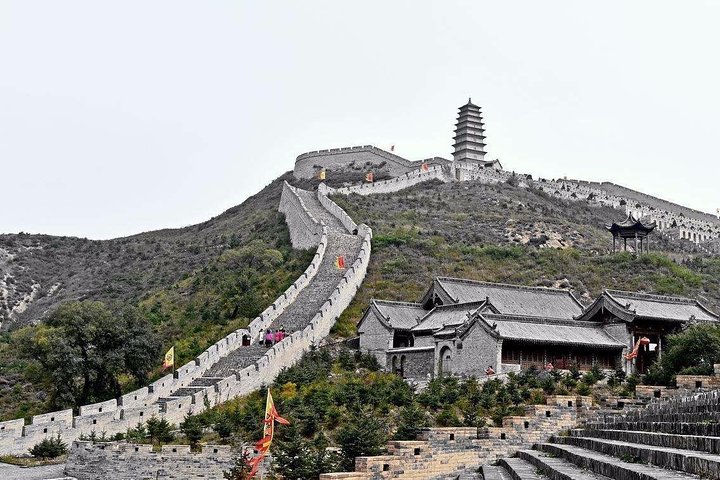
Yanmenguan.
Best Time to Visit
The ideal time to explore Yanmenguan Pass is during the spring (April to June) and autumn (September to November). These seasons offer pleasant weather, making it easier to hike and explore without the discomfort of sweltering heat or heavy rainfall. Winter can be quite cold, while summer may see larger crowds.
Getting There
Location: Yanmenguan Pass is situated approximately 20 kilometers north of Dai County in Shanxi Province.

Yanmenguan.
Transportation Options:
– By Car: Renting a car is a convenient way to reach Yanmenguan. The scenic drive through the mountainous roads adds to the experience.
– Public Transport: Buses are available from major cities like Datong or Taiyuan to Dai County. From Dai County, local taxis or small buses can take you to the Pass.
Opening Hours
Yanmenguan Pass is open daily from 8:00 AM to 7:30 PM. It’s advisable to arrive early to enjoy the site with fewer visitors and to take full advantage of the daylight for photography and exploration.
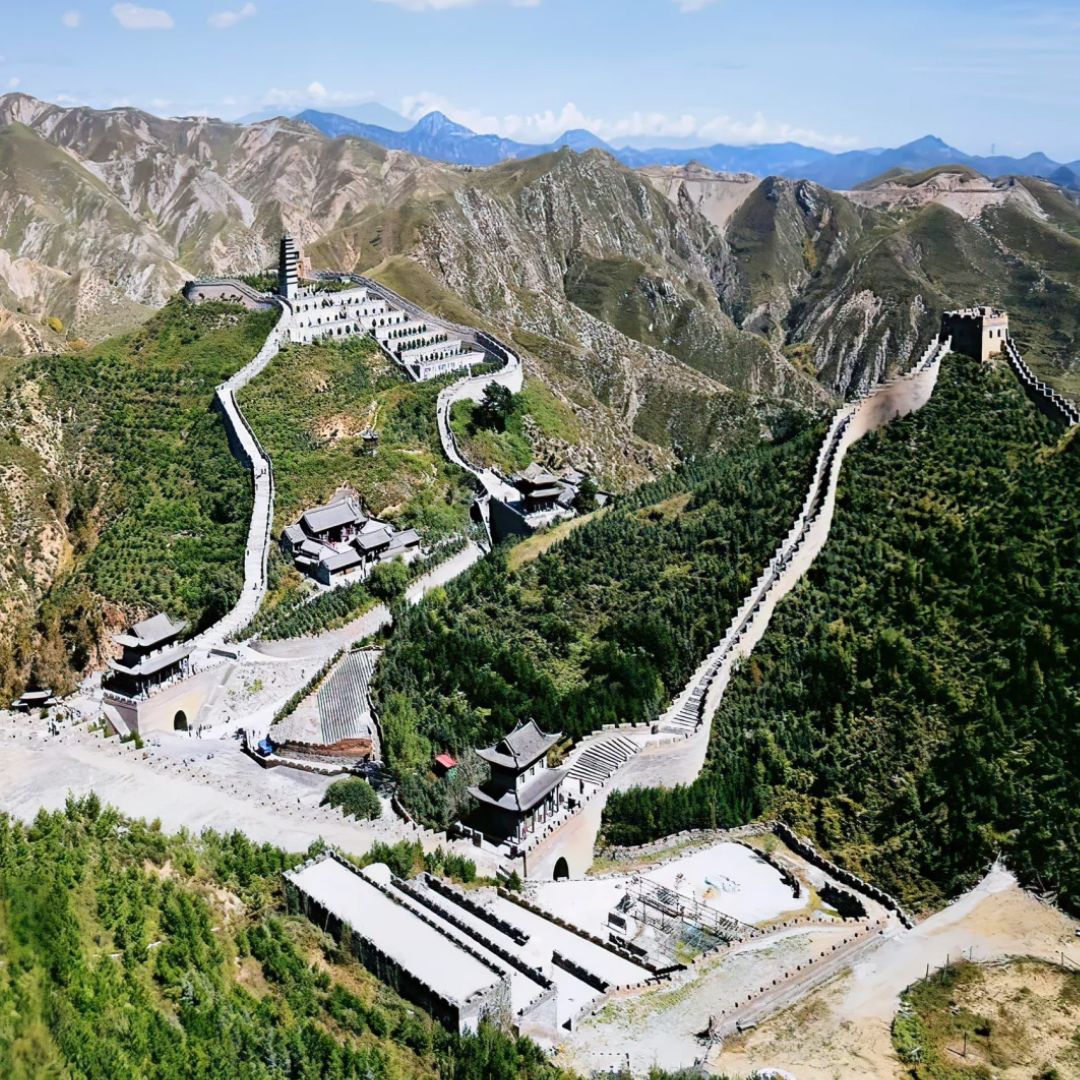
Yanmenguan.
Admission Fees
As of 2025, the entry fee for Yanmenguan Pass is approximately ¥60 (around $9 USD). This fee may vary, so it’s wise to check for any updates or changes prior to your visit.
What to Expect
Historical Significance: Yanmenguan Pass is one of the most crucial fortifications in the Great Wall of China, with over 130 significant battles fought in this area over 2,000 years. The site features three gates, and the castle walls, made of brick and stone, rise approximately six meters.
Scenic Beauty: Surrounded by towering mountain peaks, the pass offers stunning views and excellent opportunities for photography. The ancient road leading to the pass winds through dramatic cliffs, enhancing the sense of adventure.

Yanmenguan.
Activities:
– Hiking: Prepare for a moderate hike from the tourist station to the castle. The trek allows you to absorb the natural beauty of the region.
– Cultural Exploration: Engage with local history through informative displays and guided tours, which provide deeper insights into the significance of the pass.
Nearby Attractions
While visiting Yanmenguan Pass, consider exploring these nearby attractions:
– Great Wall-Yanmenguan Section: Experience another part of the Great Wall that showcases its majestic architecture.
– Yanmen Pass: Just a short distance away, this site offers additional historical context and stunning views.
– Xinzhou Bianjing Building: A historic architectural marvel within reach that adds to your cultural journey.
Tips for a Great Visit
- Wear Appropriate Footwear: Sturdy hiking shoes are recommended, as the terrain can be rocky and uneven.
- Stay Hydrated: Bring plenty of water, especially if visiting during warmer months.
- Respect Local Customs: Engage respectfully with the local culture and be mindful of the historical significance of the site.
- Photography: Don’t forget your camera! The scenery and ancient architecture provide countless opportunities for stunning photographs.
Conclusion
Yanmenguan Pass is more than just a historical site; it’s a portal to understanding China’s rich history and its ancient defenses against invasions. By planning ahead and embracing the unique experiences this site offers, you’ll create lasting memories that connect you to the heart of Chinese culture and history. Enjoy your journey!
Tickets: Prices, Booking, and Tips
Essential Information for Visiting Yanmenguan Pass
Yanmenguan Pass, a majestic relic along the Great Wall of China, invites history enthusiasts and cultural explorers alike to delve into its storied past. To ensure a seamless visit, here’s what you need to know about ticket prices, booking options, and practical tips.
Ticket Prices
- General Admission: The entrance fee for Yanmenguan Pass is approximately 60 RMB (about $9 USD) per person. This fee grants access to the main areas of the pass, including the fortress and its scenic views.
- Discounts: Reduced ticket prices are often available for students, seniors, and children, so be sure to carry valid identification if you qualify for these discounts.
- Guided Tours: If you prefer a more in-depth experience, consider booking a guided tour. Prices for these tours can range from 135 RMB to 220 RMB (approximately $20 to $34 USD) depending on the inclusions, such as transportation and additional sites.
Booking Options
- On-site Purchase: Tickets can be purchased directly at the entrance of Yanmenguan Pass. However, during peak tourist seasons, it’s advisable to arrive early to avoid long queues.
- Online Booking: To save time, you can book tickets in advance through various travel platforms such as Trip.com or Viator. Online bookings often provide options for guided tours and can include cancellation policies for flexibility.
- Group Reservations: If you’re traveling with a larger group, inquire about group discounts or package deals, which can enhance your experience and reduce costs.
Tips for Your Visit
- Best Time to Visit: Yanmenguan Pass is open daily from 8:00 AM to 7:30 PM, with the best time to visit being in the spring or autumn when the weather is mild and the scenery is particularly stunning.
- Getting There: The pass is located about 20 km north of Dai County. Public transportation options are available, but consider renting a car or hiring a local guide for a more convenient journey.
- Prepare for Hiking: The area around Yanmenguan features rugged terrain. Comfortable walking shoes are essential, as you may need to hike to fully experience the breathtaking views.
- Photography: Bring your camera! The dramatic landscapes and ancient architecture present countless opportunities for stunning photographs, especially during sunrise or sunset.
- Cultural Respect: As a site of historical significance, it’s important to respect the local customs and preserve the integrity of the location. Be mindful of your surroundings and follow any posted guidelines.
With its rich history and breathtaking scenery, Yanmenguan Pass is a must-visit for anyone looking to explore the depths of Chinese culture. Whether you’re wandering through its ancient fortifications or soaking in the panoramic views, your visit will surely be a memorable one.
How to Get There: A Complete Transportation Guide
Getting to Yanmenguan Pass: A Comprehensive Transportation Guide
Visiting Yanmenguan Pass (雁门关), one of the most significant fortresses along the Great Wall of China, is a journey steeped in history and breathtaking landscapes. This guide will help you navigate your way to this historical gem in Shanxi Province, ensuring your travel experience is smooth and enjoyable.
By Air
Nearest Airports:
– Xinzhou Wutaishan Airport (WUT): Approximately 40 km away from Yanmenguan Pass. This is the most convenient airport for travelers.
– Datong Yungang Airport (DAT): Located about 100 km to the northwest, this airport is also an option but requires a longer travel time.
Airport Transfer Options:
– Taxi Services: Available at both airports. Expect to pay around 150-200 RMB from WUT and about 300-400 RMB from DAT to Yanmenguan Pass.
– Car Rentals: Several car rental agencies operate from the airport. Booking in advance is recommended, especially during peak travel seasons.
By Train
Traveling by train is an excellent option for those who appreciate scenic views and comfort.
Train Stations:
– Dai County Railway Station: The closest major station, located about 20 km from Yanmenguan Pass.
– Datong Railway Station: For those coming from larger cities, Datong offers more frequent services.
Train Travel Tips:
– From Beijing: High-speed trains from Beijing to Datong take around 4-5 hours. From Datong, take a taxi or bus to reach Yanmenguan Pass.
– From Taiyuan: Trains from Taiyuan to Dai County are frequent, with a travel time of about 2 hours.
By Bus
Buses are a budget-friendly way to reach Yanmenguan Pass, though they may take longer than trains.
Bus Routes:
– From Taiyuan: Direct buses run from the Taiyuan West Bus Station to Dai County. The journey takes approximately 3-4 hours.
– From Datong: Buses also operate between Datong and Dai County, typically taking around 2-3 hours.
Local Transport:
– Once in Dai County, taxis and local buses can take you to Yanmenguan Pass. The fare should range between 20-30 RMB.
By Car
For those who prefer the freedom of driving, renting a car can enhance your experience.
Driving Directions:
– From Taiyuan: Take the G55 expressway towards Dai County. The journey is about 150 km and takes approximately 2-3 hours.
– From Datong: Travel approximately 100 km southeast on the G20 highway.
Parking Information:
– There is designated parking available at Yanmenguan Pass. However, during peak tourist seasons, it’s advisable to arrive early to secure a spot.
Tips for Your Journey
- Best Time to Visit: Spring (April to June) and Autumn (September to November) are ideal, providing pleasant weather and stunning natural scenery.
- Local Accommodations: Consider staying in nearby towns like Dai County or Datong, where you can find various hotels and guesthouses.
- Cultural Considerations: While English is not widely spoken, learning a few basic Mandarin phrases can enhance your interactions with locals.
With this guide in hand, you are now equipped to embark on your adventure to Yanmenguan Pass, where the echoes of history await you amidst breathtaking landscapes. Happy travels!
Local Cuisine and Accommodation Nearby
Exploring the rich tapestry of history at Yanmenguan Pass is just one part of your journey through this significant area of Shanxi Province. To truly immerse yourself in the local experience, you cannot overlook the delightful cuisine and comfortable accommodations that await you nearby.
Culinary Delights
1. Shanxi Noodles (山西刀削面)
A trip to Shanxi would be incomplete without savoring its famed Dao Xiao Mian, or knife-cut noodles. These hearty, chewy noodles are typically served in a rich broth with tender meat and fresh vegetables. Look for local eateries or noodle shops in the nearby town of Dai County.
2. Pingyao Beef (平遥牛肉)
Renowned across China, Pingyao’s beef is marinated with a blend of spices and then slow-cooked to perfection. Enjoy it served thinly sliced with a side of pickled vegetables, showcasing the region’s culinary heritage.
3. Aged Vinegar (山西老陈醋)
Shanxi is famous for its vinegar, which is a staple in local cooking. Enjoy it as a dipping sauce or drizzled over dishes to enhance flavors. You can find several restaurants that incorporate this tangy delight into their dishes.
4. Jujube and Chestnut Cake (红枣栗子糕)
For dessert, don’t miss out on this traditional Shanxi treat made from sweet dates and chestnuts. It offers a unique taste of the region and makes for a perfect snack after a day of exploring.
Where to Stay
1. Yanmenguan Great Wall Hotel (雁门关大酒店)
Located conveniently near the pass, this hotel offers comfortable accommodations with stunning views of the surrounding mountains. The on-site restaurant serves local delicacies, making it a perfect base for your explorations.
2. Dai County International Hotel (代县国际大酒店)
A bit further away, this hotel provides modern amenities and is known for its hospitable service. It features a restaurant that specializes in traditional Shanxi cuisine, ensuring that you experience the local flavors during your stay.
3. Xinzhou Wutai Hotel (忻州五台山大酒店)
Situated about 30 kilometers from Yanmenguan, this hotel is a great option for those looking to explore both the pass and the nearby Wutai Mountain, a UNESCO World Heritage Site. The hotel features comfortable rooms and a restaurant offering a mix of local and international dishes.
4. Guesthouses and Homestays
For a more authentic experience, consider staying in one of the local guesthouses or homestays in Dai County. These accommodations often provide home-cooked meals, allowing you to enjoy the true flavors of Shanxi while mingling with local families.
Conclusion
As you wander through the historical corridors of Yanmenguan Pass, take time to indulge in the local cuisine that reflects the rich culture of Shanxi. With comfortable accommodations nearby, your journey through this historic landscape will be as delightful as it is educational.
Frequently Asked Questions
Frequently Asked Questions
1. What is Yanmenguan Pass?
Yanmenguan Pass, also known as the Wild Goose Gate, is a historically significant fortress located in Shanxi Province, China. It is one of the most important passes along the Great Wall of China and has served as a strategic military point for over 2,000 years, witnessing approximately 130 major battles.
2. How do I get to Yanmenguan Pass?
Yanmenguan Pass is located approximately 20 kilometers north of Dai County. Visitors can reach the pass by car, public transport, or guided tours from nearby cities such as Datong. There are designated parking areas, and the final leg of the journey often requires a shuttle bus from the visitor center to the base of the pass.
3. What are the opening hours for Yanmenguan Pass?
Yanmenguan Pass is open daily from 8:00 AM to 7:30 PM. It is advisable to arrive early to avoid crowds and ensure sufficient time to explore the area.
4. Is there an entry fee to visit Yanmenguan Pass?
Yes, there is an entry fee for Yanmenguan Pass, which usually varies depending on the season and any special exhibitions. Check local listings or the official tourism website for the most current pricing.
5. What should I wear when visiting Yanmenguan Pass?
Visitors are encouraged to wear comfortable walking shoes and dress according to the season, as the area can be quite mountainous and the weather can change rapidly. Layering is recommended, especially during the colder months.
6. Are there guided tours available at Yanmenguan Pass?
Yes, guided tours are available and can enhance your experience by providing historical context and insights about the pass and its significance. These tours can be booked online or through local travel agencies.
7. Can I hike around Yanmenguan Pass?
Absolutely! There are several hiking trails around Yanmenguan Pass, offering breathtaking views of the surrounding mountains and the Great Wall. Some paths may be steep, so a moderate level of fitness is suggested.
8. What other attractions are near Yanmenguan Pass?
Nearby attractions include the Great Wall-Yanmenguan Section, Yanmen Pass, and various historic sites such as the Xinzhou Bianjing Building and the Xinzhou Ashoka Tower. These sites provide a rich tapestry of cultural and historical experiences in Shanxi Province.
Final Thoughts on Your Trip
As you reflect on your journey to Yanmenguan Pass, you’ll find that this historical site offers more than just picturesque views of ancient fortifications nestled among towering mountains. Here, the echoes of the past resonate deeply, inviting you to understand the strategic significance of this location in the grand narrative of Chinese history.
A Tapestry of History and Culture
- Rich Heritage: Yanmenguan is not merely a pass; it is a testament to the resilience and ingenuity of those who defended China’s northern borders. The remnants of battles fought and the stories of warriors who once stood guard imbue the area with a profound sense of history.
- Breathtaking Scenery: Surrounded by rugged cliffs and lush landscapes, the natural beauty of Yanmenguan enhances your appreciation of its historical significance. The combination of man-made marvels and Mother Nature’s artistry creates a captivating atmosphere that will linger in your memory long after you leave.
Engagement Beyond the Walls
Visiting Yanmenguan is an invitation to engage with the rich tapestry of Chinese culture. Take time to explore nearby attractions, such as the Great Wall’s Yanmenguan section and the historic architecture of the surrounding region. Each site adds depth to your understanding of China’s complex history.
Final Reflections
As you prepare to leave this enchanting venue, consider the lessons learned from your visit. Yanmenguan serves as a reminder of the enduring spirit of a civilization that has withstood the test of time. The walls that once protected against invasions now stand as silent witnesses to centuries of transformation and continuity.
Your adventure in Yanmenguan Pass is not just a chapter in your travel diary; it’s a connection to a past that still influences the present. Embrace the stories of those who walked before you, and carry the spirit of Yanmenguan into your journey ahead.